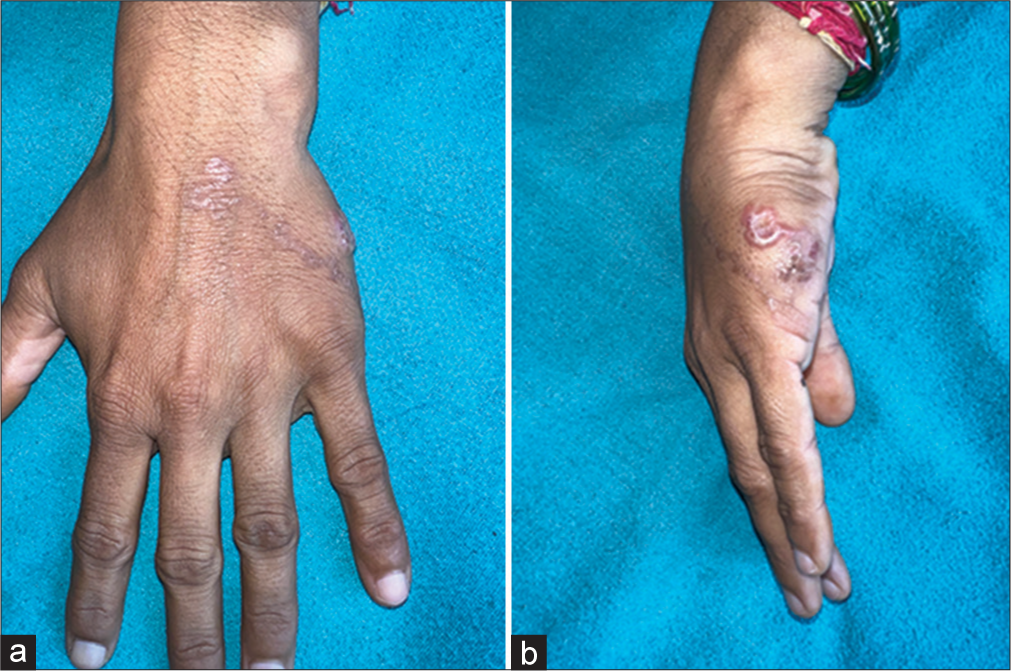Translate this page into:
Cutaneous Larva Migrans in an Adult Female
*Corresponding author: Shubham Kumar, Department of Dermatology, All India Institute of Medical Sciences, Jodhpur, Rajasthan, India. shubhamrajputaiims15@gmail.com
-
Received: ,
Accepted: ,
How to cite this article: Bano N, Kumar S. Cutaneous Larva Migrans in an Adult Female. Indian J Postgrad Dermatol. 2025;3:73. doi: 10.25259/IJPGD_141_2024
A 26-year-old female presented with 15 days history of mildly pruritic erythematous papules which gradually increased in a serpentine manner to form a plaque. The eruption started over dorsal aspect of the left hand [Figure 1] and involved medial aspect subsequently. On a clinical basis, cutaneous larva migrans also known as creeping eruption was diagnosed. It is caused by multiple types of hookworms. Transmitted through animal faeces depositing eggs in soil, where larvae penetrate human skin through direct contact. It is usually a self-limited disease.

- (a) Erythematous, elevated serpiginous tract over dorsal aspect of left hand (b) Well defined erythematous plaque forming annular appearance.
Ethical approval
Institutional Review Board approval is not required.
Declaration of patient consent
The authors certify that they have obtained all appropriate patient consent.
Conflicts of interest
There are no conflicts of interest.
Use of artificial intelligence (AI)-assisted technology for manuscript preparation
The authors confirm that there was no use of artificial intelligence (AI)-assisted technology for assisting in the writing or editing of the manuscript and no images were manipulated using AI.
Financial support and sponsorship
Nil.






